Discovering Free Tools for Room Layout Design
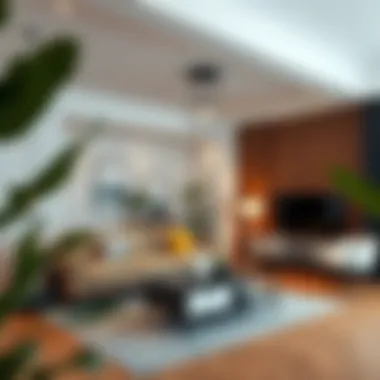
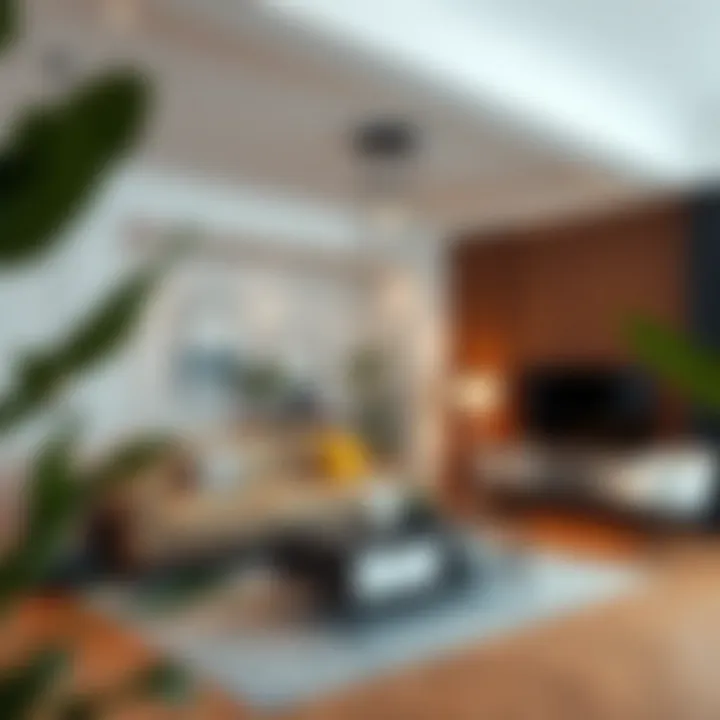
Intro
In the world of interior design, the right room layout can make or break a space. With the rise of digital technology, homeowners and designers now have free tools at their fingertips to help create stunning room designs without the hefty price tag. These resources are not merely reliable; they open up a myriad of possibilities for everyone—be it a DIY enthusiast looking to refresh their home or a seasoned designer crafting their next masterpiece.
Whether it’s configuring furniture in a cozy living room or optimizing a small kitchen, the significance of an effective layout cannot be overstated. Many online tools equip users with user-friendly interfaces, intuitive design elements, and interactive features that take the guesswork out of arranging furniture. This article will traverse these valuable tools, revealing their unique offerings and guiding you through how to maximize your space effectively.
By emphasizing free tools available online, this guide aims to empower individuals with knowledge and confidence to enhance their living environments. Expect insights on which software stands out, practical tips for achieving balanced layouts, and a deep dive into current trends influencing the way we design our rooms. This will serve as a one-stop resource tailored for a diverse audience that ranges from enthusiastic novices to skilled professionals eager to embrace modern-day design technology.
Intro to Room Layout Design Tools
When it comes to crafting a space that mirrors both functionality and aesthetic appeal, understanding room layout design tools is paramount. These tools act as a bridge between vision and execution, allowing homeowners and designers to visualize their ideas before making any tangible alterations. With room layout design tools, the tedious process of imagining the end result in one’s mind transforms into an interactive, engaging affair. By employing these resources, individuals can mitigate the risk of making costly mistakes when planning their designs.
Understanding Room Layout Importance
The significance of a well-thought-out room layout cannot be overstated. It serves as the backbone of any space, guiding everything from furniture arrangement to the overall flow of movement. A cleverly planned room ensures not just an aesthetically pleasing environment, but also enhances usability. For instance, in small apartments, maximizing square footage can be a puzzle. A good layout can convert a cramped area into a cozy nook, making one feel right at home.
In contrast, ignoring layout principles may lead to areas that feel cluttered or uninspired. Rooms become less functional, and the opportunity to create a harmonious living environment diminishes. This is where the right tools come into play—enabling users to visually explore various configurations before committing to any significant changes.
The Role of Technology in Interior Design
Technology has transformed how we approach interior design. Gone are the days when designers relied solely on pen and paper to sketch out plans. Modern tools harness the power of digitalization, allowing users to create intricate layouts virtually. This shift means that trials and errors can happen without any heavy lifting or aesthetic woes, ultimately saving both time and resources.
With free online tools, anyone from a DIY enthusiast to a professional designer can access sophisticated features like 3D modeling and real-time adjustments. Imagine being able to rotate and scale furniture within a digital environment—it's a game changer. This instant feedback loop means that decisions can be made quickly, reducing the chance of post-design buyer's remorse.
Moreover, technology facilitates collaboration. Designers can share layouts easily with clients, enabling discussion about changes and tweaks before physical work begins. Such interactivity not only guarantees that the final product aligns with the client's vision but also instills confidence in the design process.
"The best designs arise from a rhythm of experimentation, adaptation, and evolution, which technology allows on a grand scale."
In a nutshell, understanding room layout design tools is essential for harnessing the full potential of space. By combining both creativity and technological insight, one can sculpt environments that are not only beautiful but also practical.
Defining Free Room Layout Design Software
Understanding free room layout design software is essential for anyone looking to optimize their space without breaking the bank. These tools cater to a broad audience, from casual DIY enthusiasts to serious interior designers. They allow users to visualize a room, experiment with furniture arrangements, and make choices that best suit their needs. By utilizing free software, individuals can embark on their design journey without the financial strain that often accompanies professional design services.
Characteristics of Free Design Tools
First things first, what makes a design tool truly free? Generally, these platforms are accessible over the internet and do not require a hefty subscription fee. Here are key characteristics to pay attention to:
- Intuitive Interface: Many free tools come with user-friendly interfaces, enabling even novices to navigate with ease. Users can drag and drop furniture or walls without needing an engineering degree.
- Basic 3D Modeling: Even a free tool often provides basic 3D capabilities, allowing users to switch between two-dimensional layouts and three-dimensional views quickly. This helps in understanding how a space will look once the design is executed.
- Furniture Libraries: A good free tool will come with an adequate library of furniture images and fixtures. Users can play with different styles and colors to see what fits their vision.
- Export Options: Some free software enable users to export their designs in various formats. Whether you want to share it on social media or send it to a contractor, having this option often comes in handy.
- Online Access and Collaborations: Many free tools operate in the cloud, allowing users to access their designs from anywhere and collaborate with others easily.
Ultimately, these characteristics make free software what it is—a valuable resource that empowers individuals to make informed design decisions.
Comparison with Paid Options
When considering design tools, it's crucial to outline how free options stack up against their paid counterparts. While it might be tempting to go for the premium versions with all the bells and whistles, there are important distinctions:
- Cost-effectiveness: The most apparent difference is cost. Free tools allow users to experiment with layouts without financial commitment, which is particularly useful for those testing the waters.
- Feature Limitations: While free software can offer solid baseline features, they often come with limitations. Advanced functionalities, such as advanced lighting effects or certain rendering capabilities, might only be accessible through paid tools.
- Support and Updates: Paid software typically comes with better support and regular updates. Free tools might lack reliable customer service or updates, which can restrict usability in the long run.
- Ad Placement: Many free options come with advertisements that can clutter the user experience. Paid subscriptions often promise a cleaner interface without distractions.
- Data Privacy: Users of free tools might find that their data is more vulnerable compared to paid subscriptions, which usually have more robust privacy policies.
In sum, while free room layout design software provides excellent entry points for beginners and budget-conscious users, serious designers may find more advantages in investing in paid alternatives—considering their specific needs and long-term goals.
"Making the right choice in software can serve as the foundation for a successful design project, ensuring you have the tools you need at your fingertips, whether they come at a cost or are freely accessible."
Whether you’re a homeowner or an aspiring designer, understanding both free and paid options is fundamental for effective room layout design.
Key Features to Look For
When diving into free room layout design tools, understanding the essential features to look for can make all the difference in your design process. The right toolbox can streamline your efforts, ensuring both effectiveness and creativity in enhancing your space. Here are some features that stand out.
User-Friendly Interface
A straightforward, user-friendly interface is crucial for any design software. When you first open the application, it should not feel like you've entered a labyrinth. An intuitive layout allows users to navigate seamlessly without spending hours trying to figure out how to create a simple floor plan. Users appreciate tools that prioritize ease of use. For instance, drag-and-drop functionality can speed up the design process, allowing you to place furniture realistically and make quick adjustments.
In addition, tutorials and help sections are invaluable for new users. The first few minutes in a new tool can set the tone for the rest of the experience. When users find tutorials easily, it can demystify potentially frustrating learning curves.
3D Visualization Capabilities
Imagining a design in your head is one thing, but seeing it brought to life in 3D is another level entirely. 3D visualization features allow users to have a realistic view of their design. It’s like having a crystal ball into your future space. This capability helps users understand how elements interact within a room.
Moreover, these tools often let you explore different perspectives, giving you a sense of how the room will feel from different angles. Being able to pivot around your design helps in grasping scale and proportion, valuable assets in room layout planning. This can significantly reduce the likelihood of making costly errors during implementation.


Customization Options
Customization is key when designing personal spaces. A robust tool should allow you to tailor everything—from size and shape of rooms to the dimensions and styles of furniture. Having a wide range of customizable options means users can reflect personal tastes and styles accurately.
Beyond just selecting colors and textures, consider the importance of furniture arrangements tailored specifically to your needs. Does the tool allow for the input of custom dimensions for non-standard furniture pieces? Can you modify colors or materials to visualize different options? The more flexible the tool, the more likely users will achieve a design that resonates with their vision.
Accessibility Across Devices
In our fast-paced world, being able to access design tools from various devices is a necessity. Whether you’re on a tablet in the living room or a desktop in your office, having a tool that works across devices ensures you can work on your design whenever inspiration strikes. This capability makes it easier to collaborate with family members or share your ideas with friends.
Moreover, cloud-based options often mean that your work is saved automatically, reducing the fear of losing designs due to device issues. Just imagine being able to work on your layout at a coffee shop and then seamlessly picking up where you left off at home.
Incorporating these features can not only make the design process smoother but also result in a more satisfying final layout.
When searching for free room layout design tools, prioritize these characteristics to enhance your experience and achieve impressive results. The right features can not only elevate your design capabilities but also heighten your creative satisfaction, making the journey of designing your room enjoyable and fulfilling.
Popular Free Room Layout Design Tools
Exploring various tools for room layout design is essential for homeowners, designers, and DIY enthusiasts alike. Free online tools widen the horizon for creativity, all while being budget-friendly. These resources offer diverse capabilities, enabling users to create layouts that are both aesthetically pleasing and functional.
Choosing the right design tool can make a world of difference in how efficiently ideas transform into actual layouts. Many free tools now come equipped with robust features that were previously exclusive to premium software, thus leveling the playing field for anyone interested in interior design.
Benefits of Popular Free Tools:
- Cost-Effective: With free tools, one can experiment with different designs without the financial commitment.
- Accessibility: Many online platforms allow you to access your designs anytime and anywhere, making it easier to collaborate with others or make on-the-go adjustments.
- User-Friendly: Most of these tools are designed with the user in mind, allowing even the least tech-savvy among us to navigate easily.
- Comprehensive Features: From 3D visualization to customizable templates, these tools often provide a variety of features that help in detailed planning and execution.
An example of this evolution in design technology can be seen in the following tools:
Floorplanner: An Overview
Floorplanner offers an easy-to-use interface that simplifies the entire design process. It enables users to draft room layouts in both 2D and 3D formats. The key strength lies in its ability to visualize spaces clearly, aiding in making informed design decisions. A unique feature worth mentioning is its extensive library of furniture and decor items that can be dragged and dropped into the layout, allowing for a quick visual assessment of various setups. Floorplanner is particularly favorable for those simply looking to sketch out a basic idea or for more seasoned designers aiming to polish their visual presentations.
SketchUp Free: Features and Usability
SketchUp Free provides an intuitive platform that appeals to a range of users from hobbyists to professionals. Its web-based version offers substantial modeling capabilities without the hefty price tag. The main draw is its versatile toolset that caters to intricate designs, allowing users to create complex shapes and forms effortlessly. One can utilize the extensive repository of shared models as inspiration or as components in their projects. The learning curve is relatively mild, especially with numerous tutorials available online to help guide users into becoming proficient quickly.
Roomstyler: A Comprehensive Review
Roomstyler stands out by allowing users to design spaces in a very interactive manner. It offers a 3D view while users make edits in the layout, providing instant visual feedback. This immediate gratification is one of the primary reasons many users prefer Roomstyler. It boasts a wide array of furniture options, many provided by real brands, giving a legitimate feel to mock-ups. Users can also create and showcase their styled rooms on the platform, promoting a community of design sharing and feedback that can be incredibly valuable for budding designers.
Homestyler: User Experience Analysis
Homestyler appeals to users looking for a more guided design process. It involves a series of steps, from importing floor plans to placing furniture, optimizing for those who appreciate structure in their creative workflow. Its user-friendly interface and powerful tools enable a well-rounded experience. One unique offering is the ability to visualize not only furniture placement but also wall colors and textures, which can lead to more cohesive designs. Homestyler also permits collaboration, making it ideal for those working alongside partners or professional designers.
"The right tools can turn a simple room layout into a living masterpiece, seamlessly blending function and inspiration."
Understanding these popular free tools lays a solid foundation for any individual keen on enhancing their design offerings. As both technology and design continue to develop, utilizing these resources can lead to more innovative, personalized spaces.
Steps to Create an Effective Room Layout
Creating an effective room layout is like setting the stage before a performance; it’s where the magic happens. Thoughtful layout design not only enhances aesthetic appeal but also boosts functionality. Factors like furniture arrangement, space utilization, and even the flow of movement all play vital words in crafting a harmonious atmosphere in your home or workspace. Getting these elements right can lead to a more enjoyable environment, making daily activities smoother while allowing you and your guests to navigate easily.
Assessing the Space
Before jumping into design, it’s crucial to take a pause and assess the space you have. Measure not just the room dimensions, but also note any architectural features like windows, doors, or built-in fixtures. It sounds simple, but many overlook the importance of this initial step.
- Tape measure: Using a good ol' tape measure, get the length and width of the room. Don’t forget ceiling height!
- Sketch it out: Grab some graph paper or software to sketch a basic outline of the room. This will help visualize options.
- Traffic flow: Consider how people will move through the space. You wouldn’t want guests to awkwardly navigate around a table.
Clear understanding at this stage both empowers and informs your design decisions moving forward.
Choosing the Right Design Tool
With a good sense of your space, the next step is selecting an appropriate design tool. The market offers a plethora of free options, each with unique strengths and weaknesses. Choosing the right one depends on what you aim to achieve.
- User-friendliness: Look for tools that offer intuitive interfaces. If it takes more brain power to figure out the software than to design, you might be barking up the wrong tree.
- Features: Some tools allow for 3D visualization, while others excel in 2D layouts. Sometimes, simple is best if you prefer a straightforward design.
- Device compatibility: Ensure the tool works on your preferred device, whether it’s a laptop or tablet.
Finding a software that melds with your needs makes designing more enjoyable and productive.
Designing Your Layout
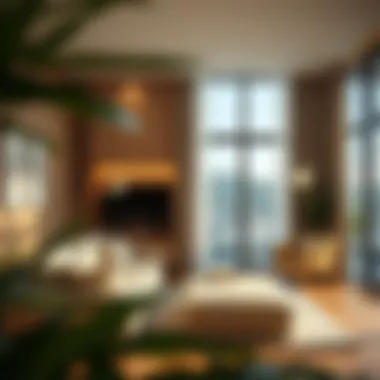
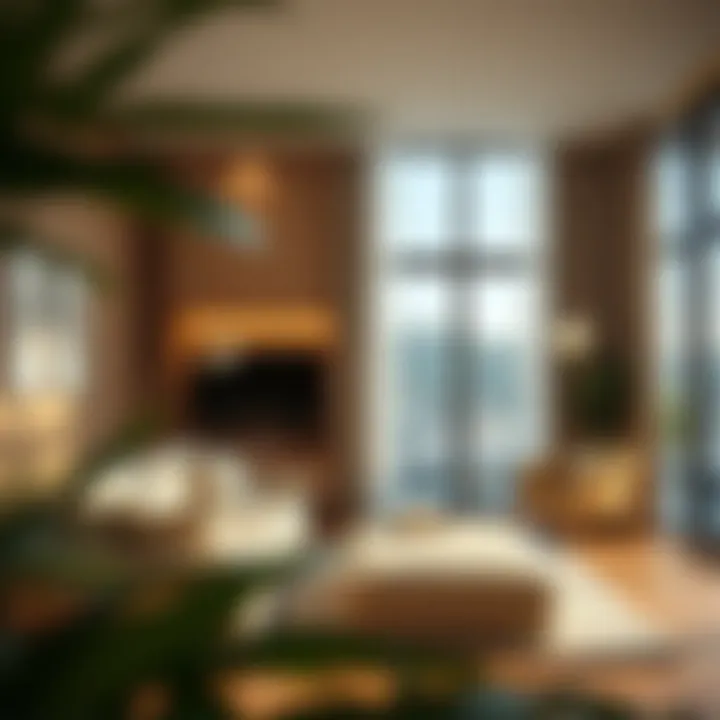
At this juncture, it’s time to roll up your sleeves and delve into designing your layout. Here’s where creativity springs to life, and the vision you had for the room can start taking shape.
- Start with key furniture pieces: Identify essential furniture items - think sofas, beds, or desks. Place these first as they dictate the flow of space.
- Experiment with arrangements: Don’t hesitate to try different configurations. Sometimes what seems right on paper doesn’t pan out when visualized in the space.
- Incorporate accessories: Once your main pieces are in place, introduce secondary items—art, lighting, plants—these add flair and personality!
Remember, the aim is not only beauty but also practicality.
Reviewing and Adjusting Design
The final stretch is all about reviewing and making necessary adjustments. Stepping back to evaluate your design can highlight areas that need tweaking.
- Seek feedback: Whether from family members or friends, fresh eyes can offer insightful comments.
- Test it out: Live with your design for a few days. That’s right, see how it feels to exist in the space. Does the layout facilitate movement? Is there enough light?
- Be flexible: Don’t be afraid to move things around again. It’s common to have to make several adjustments before landing on the perfect setup.
By taking the time to review and adjust, you're investing in a space that truly resonates with you.
"A well-thought-out room layout is more than just aesthetics; it directly affects function, comfort, and the overall experience within the space."
Creating an effective room layout requires patience and thoughtfulness—but with these steps, you can bring about a transformation that reflects both style and purpose.
Common Mistakes in Room Layout Design
When stepping into the world of room layout design, several pitfalls can undermine even the best intentions. Identifying these common mistakes is essential for anyone looking to create a functional, inviting space. Understanding the importance of avoiding these errors not only saves time and effort, but also enhances the overall aesthetic and functionality of a room. In this section, we’ll dive into three prevalent mistakes—ignoring natural light, underestimating space requirements, and neglecting traffic flow—and shed light on how to steer clear of them.
Ignoring Natural Light
One of the most often overlooked aspects of room design is natural light. It's a fundamental resource that can elevate a room's atmosphere and functionality. When designing a space, failing to account for how natural light enters can lead to dim, dreary environments.
- Importance of Natural Light: Natural light not only brightens a space but also affects mood and well-being. A well-lit room creates a warm, inviting vibe, while a poorly lit one may feel cramped or unwelcoming.
- Window Placement Considerations: Think about placing furniture away from windows to open up the area. You don't want to block out all that beautiful sunshine. Moreover, don’t hesitate to use reflective surfaces, such as mirrors or light color palettes, to amplify the light.
By harnessing the power of natural light, your designs can feel fresh and energizing.
Underestimating Space Requirements
Another critical mistake is the failure to accurately assess space requirements. Many novice designers tend to underestimate how much space they really need for movement and functionality. Overestimating the dimensions of items like sofas or tables can lead to cramped, uncomfortable spaces.
- Measuring the Space: Before purchasing any furniture, take precise measurements of the room. It gives a better idea of what will fit and how to arrange it effectively.
- Scale and Proportion: Not all furniture is created equal. A large pottery barn coffee table might look magnificent in a sprawling room, but in a tiny apartment, it can consume too much space and make everything else look small.
Being conscious of spatial needs ensures that the layout is practical and efficient, preventing future headaches.
Neglecting Traffic Flow
The final common mistake lies in neglecting traffic flow within the space. This often occurs when individuals prioritize aesthetics over functionality. If people have to zigzag through furniture or perform an awkward dance just to move around, it might turn a beautifully designed room into a frustrating maze.
- Pathways Matter: Consider how many points of entry and exit exist in the room, and aim to create clear pathways. A good rule of thumb is to maintain at least 24 inches of open space for paths used regularly.
- Furniture Arrangement: Arrange furniture not just for appearance but also for utility. Keep frequently used items easily accessible, and avoid blocking the natural pathways with larger pieces.
Traffic flow is essential in ensuring not just comfort, but also safety. A well-laid space lets the inhabitants move with ease, creating a harmonious environment that fosters relaxation.
Avoiding these common mistakes in room layout design can completely change your space for the better. By being mindful of natural light, accurately assessing requirements, and ensuring a smooth traffic flow, you'll be well on your way to designing a space that feels just right.
Ultimately, acknowledging and correcting these common pitfalls in room layout design enhances not only the aesthetic appeal but the functional efficiency of your space. Take the time to thoroughly assess your needs and requirements, and don’t rush the process. A thoughtful approach can yield results that shine.
Integrating Furniture with Layout Design
Integrating furniture effectively with layout design is critical to creating a space that feels both welcoming and functional. When tackling a room design, furniture is not just about aesthetics; it’s about how well these pieces work together to serve your needs. Good integration means considering how each element contributes to the overall harmony and usability of the space.
Often, the first step in this process involves understanding the room itself – its dimensions, lighting, and the natural flow of movement within it. Once those factors are clear, the challenge shifts to selecting furniture that enhances the functionality of the room without overwhelming it.
Selecting Functional Pieces
When it comes to selecting the right pieces, functionality reigns supreme. Imagine walking into a living room filled with stunning furniture but lacking practical use. For instance, a beautiful chaise lounge might look fantastic, yet if it crowd the walkway or doesn’t offer adequate seating, it’s hardly worthwhile. Here are some key considerations when choosing functional furniture:
- Scale: Make sure the size of the furniture is in proportion to the room. A massive sofa can make a small room feel cramped, while tiny chairs can make a large room feel empty.
- Purpose: Identify what activities will occur in the room. If you like hosting gatherings, opt for sofas or sectional that can accommodate guests comfortably.
- Flexibility: Consider modular or multi-functional pieces, such as ottomans with hidden storage, that adapt easily to different uses.
- Traffic Flow: Ensure there's enough space for people to move around without bumping into furniture. A well-placed coffee table can enhance functionality, but if it disrupts circulation, it loses its value.
Balancing Style and Comfort
Balancing style and comfort is a fine art. It’s one thing to have a space that looks good, but if it’s not comfortable, you won’t want to spend time in it. Think of a beautiful chair that’s so rigid your guests would rather stand than sit.
To strike a balance, you might consider:
- Material Choices: Fabric types can drastically affect both comfort and style. Plush fabrics like velvet can invite a cozy feel, whereas leather offers sophistication.
- Color Coordination: Colors play a huge role in setting the mood. Warm hues can create a welcoming ambiance, while cooler tones can promote calmness. Choose colors that not only fit your aesthetic but also support a comfortable atmosphere.
- Ergonomics: Check for the comfort aspects of the pieces you choose. Chairs should provide good support, and sofas should invite lounging without making you feel like a sack of potatoes.
- Personal Touch: Incorporating items that have meaning to you—like family heirlooms or art pieces—can elevate the style while ensuring the space feels uniquely yours.
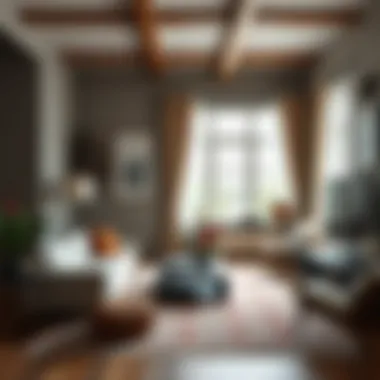
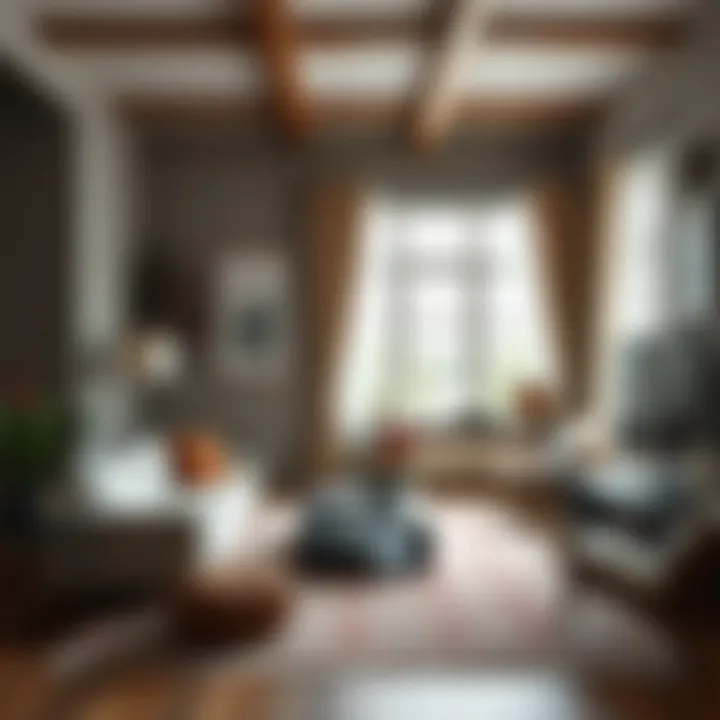
Integrating furniture with layout design is like piecing together a puzzle; every element must fit seamlessly together. Paying close attention to functionality and comfort ensures that your room doesn’t just look good on the surface, but also serves its intended purpose beautifully. For further insights, check resources like Britannica for deeper dives into design principles or Wikipedia for more on furniture history and trends.
The Impact of Color and Materials on Layout
When it comes to designing a room layout, color and material choices hold significant weight. These elements are not merely decorative; they play a crucial role in shaping the mood and functionality of a space. Getting the color palette and materials right can transform any room from a dull box to an inviting haven. Understanding the impact these factors have on perception and usability is essential for homeowners, DIY enthusiasts, and designers alike.
Color and materials comprise the silent yet potent language of design. They can dictate how people feel in a room and influence how space is utilized. A well-thought-out color scheme can evoke feelings of calmness, excitement, or creativity, while the material selection contributes to the overall texture and comfort of the environment.
Color Schemes and Space Perception
Color is a powerful tool in interior design; it affects how we perceive size, depth, and even temperature. For example, lighter shades like soft white or pale pastels can expand the perception of space, making a small room feel larger and more open. In contrast, darker colors such as deep blues and charcoals tend to absorb light, which can create a more intimate, cozy atmosphere.
Here are some considerations when working with color schemes:
- Mood Setting: Choose colors that align with the intended mood of the room. For instance, cool colors like greens and blues can promote relaxation, while brighter colors like yellows and oranges can enhance energy levels.
- Cohesion: Maintain a consistent color palette throughout the home to foster a sense of unity. This doesn’t mean every room should be the same, but a coherent scheme helps the space flow seamlessly.
- Accent Colors: Using accent colors in furniture or decor can provide visual interest without overwhelming the primary color scheme.
Understanding how color impacts perception can significantly influence the effectiveness of your room layout, making it not only aesthetically pleasing but also functional.
Material Selection for Functionality
Choosing the right materials is much more than a surface-level concern; it plays a substantial role in a room’s functionality and longevity. Durable materials like hardwood or ceramic tile are practical choices for high-traffic areas, while soft textiles like velvet or cotton can add comfort and warmth to living spaces.
Consider these points when selecting materials:
- Durability: Always consider how much wear and tear the materials will face. Rooms like kitchens and bathrooms often require materials that withstand moisture and staining.
- Maintenance: Some materials are easier to clean and maintain than others. For instance, glass and metal can often be wiped down easily, while fabric may require regular cleaning or upkeep.
- Aesthetic Appeal: While functionality is key, the look and feel of the materials matter. A well-chosen combination can elevate a simple space into something remarkable.
By integrating thoughtful color schemes with practical materials, you can create a room layout that not only looks good but also works effectively in real life.
"The choice of color and material can make or break the harmony of a room. It's not just about looks; it's about how a space feels to those who occupy it."
To effectively explore these aspects, it could be helpful to spend some time browsing platforms such as Pinterest for color inspiration, or visiting sites like Houzz for material ideas. Ultimately, a balanced consideration of color and materials informs not only the visual aspect of the design but also the overall experience of the space.
Iterating on Your Design
In the realm of room layout design, iteration stands as a cornerstone for achieving a satisfactory result. The process of refining your design isn’t merely about trial and error; it’s a powerful method to enhance functionality and aesthetics. As you venture through different design phases, revisiting and revising can significantly alter the final look and feel of your space. It is much like sculpting a piece of clay. You start with a rough idea, and with each pass, you chip away the unnecessary parts, allowing the masterpiece to reveal itself. In the context of room design, this iterative process can lead to discovering optimal arrangements that meet your specific needs.
Feedback and Revisions
Gathering feedback is an essential part of the iterative design process. Friends, family, or even professional designers can offer insights that you might overlook. When showing your layout to others, it's important to foster a constructive environment; ask specific questions that prompt valuable critiques. For instance, inquire about traffic flow and functionality.
- What do they feel about the space's usability? Maybe they suggest moving a couch to open up walkthrough areas.
- Are the proportions seeming right? Perhaps it looks cramped or sparsely furnished to their eyes.
- How are they responding to the ambiance? Color choices and materials can have different impacts.
Incorporating this feedback isn't just about making adjustments; it's a way of expanding your design perspective. Often, revisions based on constructive critiques lead to unexpected yet delightful results. A common technique is to create a design mood board where you can visualize ideas and make quick changes before committing to the layout.
Testing Practicality
After gathering feedback and revising your design, it’s time to put your plan to the test. This phase is crucial, for what looks good on paper might not work in reality. Once you’ve settled on a design, walk through the space as if you were using it daily. Notice if anything feels off or if the layout hinders movement. Ask yourself:
- Can you easily access the most important areas?
- Is there a natural flow that feels intuitive?
- Are there any furniture pieces that block pathways or create obstacles?
It's often helpful to temporarily position your furniture or mockup with tape on the floor to visualize the scale and arrangement without heavy lifting. This way, you can physically experience the layout and adjust as necessary based on actual use. Testing practical design ensures that you’re not merely creating a visually appealing space but also molding one that's functional and livable.
The iterative process of designing a room is a journey that can lead to greater satisfaction and improved living experiences. By embracing feedback and rigorously testing layouts, you can bring your vision closer to reality. Remember, great design often comes from many small changes, so don't hesitate to experiment and refine your space!
Concluding Thoughts on Room Layout Design Tools
Room layout design tools have become an essential part of the modern homeowner’s toolkit. These digital resources not only simplify the process of designing spaces but also empower individuals to create their dream environments without the hefty price tags associated with professional designers. It’s not just about finding the right piece of furniture or color; it's about creating an atmosphere that enhances daily living. Through this article, we've explored various free options, illustrating their capabilities and potential benefits for both novices and seasoned designers alike.
The Future of Design Technology
Looking ahead, the world of design technology is evolving rapidly. With increased access to advanced software and tools, we can expect a proliferation of innovative features. Augmented reality (AR) and virtual reality (VR), once the kind of concepts that seemed to belong to science fiction, are becoming more mainstream.
Imagine stepping into your newly designed room before any furniture is moved in, all through your smartphone or headset. This type of visualization could revolutionize how we plan our spaces. Moreover, the integration of artificial intelligence will likely enhance user experiences, offering tailored suggestions based on individual preferences and past choices. As homeowners continue to demand more personalization, the tools will need to respond accordingly, scaling to meet unique design goals on a more polular scale.
In short, the future hints at a collision of creativity and technology that will redefine how spaces are conceptualized and realized.
Encouragement to Explore Further
As we wrap up the discussion on room layout design tools, it’s vital to encourage further exploration. What started as a basic need for effective space management can blossom into a full-fledged hobby or even a career path. Experimentation is key in design; don't shy away from trying different tools. Whether it's Floorplanner, SketchUp Free, or Roomstyler, each platform brings its unique set of features.
Diving deep into these tools allows you to engage with the design process on a new level.
- Share ideas on platforms like Reddit or in specialized Facebook groups.
- Research design trends or strategies that resonate with your personal taste.
- Ask for feedback from peers or family about your designs to refine your approach.
By turning this exploration into an interactive experience, you give yourself room for growth and learning, leading to spaces that not only look good but feel right. Don’t just passively consume design; actively participate in shaping your environment.















